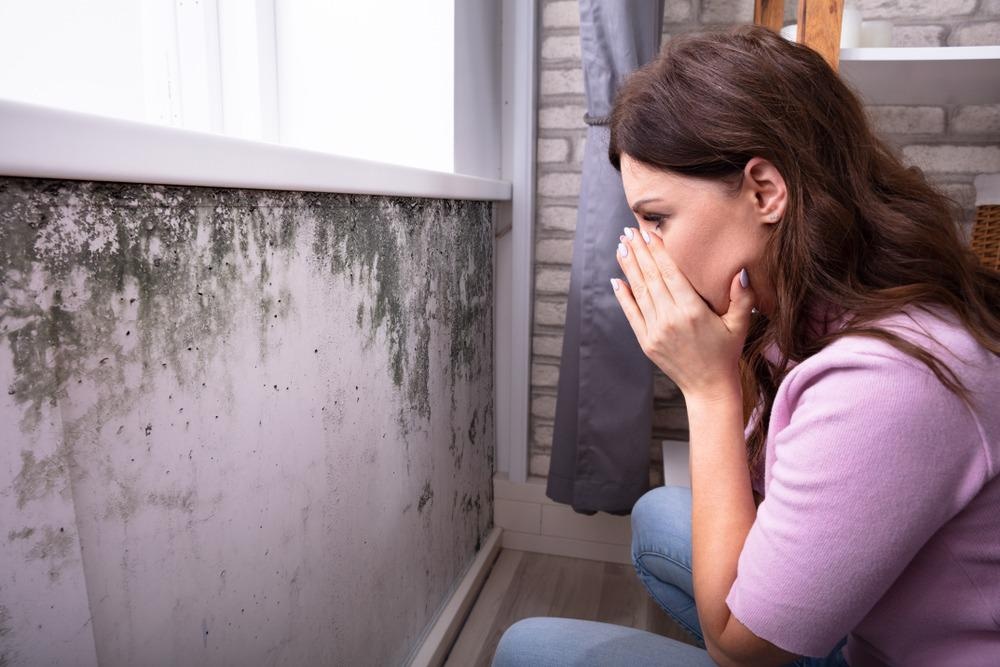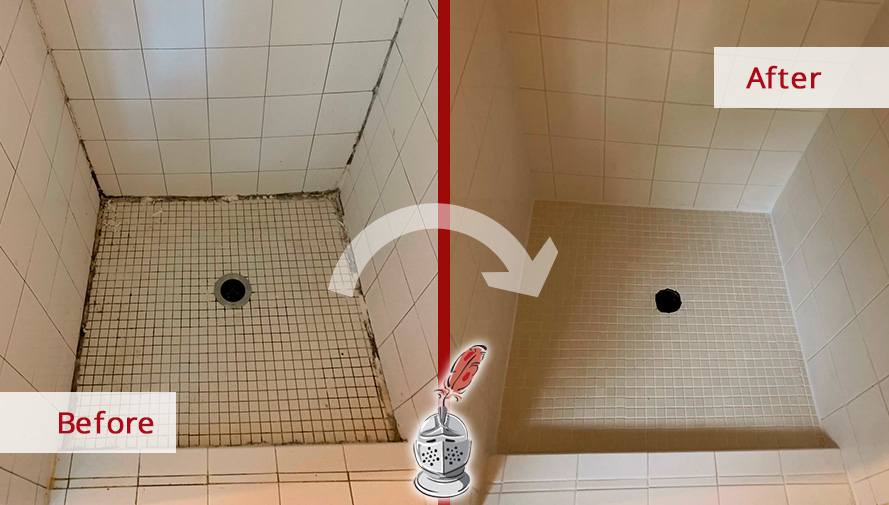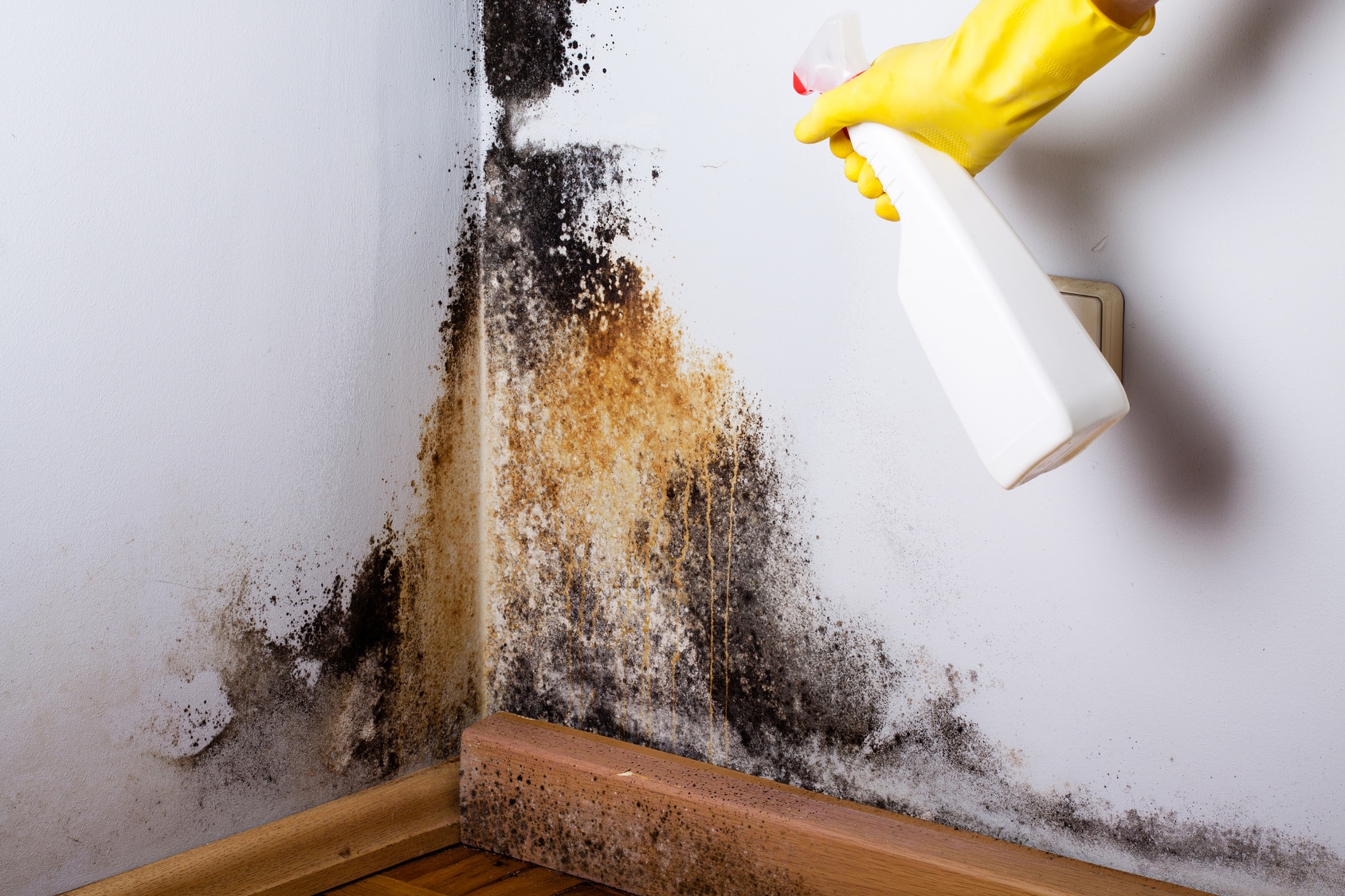Get rid of mold. mold can grow in places hidden from sight, behind wallpaper, paneling, or drywall. It can also grow in vents and around pipes, or under your carpet. It can also grow in high areas or tight spaces which are usually not cleaned. Mold can also grow in heating ducts and air conditioning, as well as on or around furniture or storage boxes.

Products That Kill Mold/TreatingBasementMold-ed52e0b26adb416a811027541dd12445.jpg)
- Chlorine bleach: Household bleach (sodium hypochlorite) works best to destroy mold and remove any discoloration. Mix a solution of 1 cup bleach to 1 gallon of water, which can be sprayed directly on the mold. Note that bleach is quite harsh, and dilution is an important step before use.
-
- Hydrogen peroxide: Less harsh than chlorine bleach, hydrogen peroxide (3% to 10% solution) will kill mold and lighten stains. While it does have a bleaching effect, it works more slowly than chlorine bleach but has no fumes or residue.
- Distilled white vinegar: Vinegar is acidic and slowly breaks down the structure of mold and kills it. Vinegar is relatively gentle, but mold stains may remain and additional scrubbing with a household cleaner may be needed.
- Baking soda and borax: Sodium bicarbonate (baking soda) and borax each have a high pH that inhibits the growth and survival of mold. Both products are inexpensive, non-toxic, and easy to mix with water. Borax will work better than baking soda for removing any lingering stains, but it is not as effective as a stronger cleaning product.
- Rubbing alcohol: Rubbing alcohol may not be as strong as other ingredients to kill mold. But when it is diluted with water in equal parts, rubbing alcohol cleans surfaces without any damage and can help to inhibit the growth of mold and mildew on fabric, leather, and paper.
When using any of these products, do not rinse away the cleaning solution completely. Leaving a bit of the cleaner will help inhibit future mold growth.
Are there any natural remedies for removing mold?

If you’re looking for a natural solution to remove mold, one of the below options will work. Keep in mind, though, that they may take more time than bleach and may not remove stains:
- Hydrogen peroxide: Grab a spray bottle and pour 3% solution of hydrogen peroxide into the bottle. Spray the affected area, let it sit for 10 minutes, and then scrub the mold away.
- Vinegar: Pour undiluted vinegar into a spray bottle and spray the moldy area. Let it sit for an hour and then wipe the area clean with water and allow it to dry.
How to get rid of mold on shower tile and grout?

Shower tile and grout can be a difficult area to keep mold free because the wet and warm conditions make it a prime breeding ground for mold. However, small areas of mold can be removed with a grout cleaner (try one of our above favorites!), a mold remover, or a bleach-and-water solution.
- Spray the grout, let the formula penetrate, and rinse. In some cases, there’s no scrubbing needed: In our tests, Clorox Telex Mold and Mildew Remover spray killed 99.9% of mold and mildew germs and bacteria in only five minutes.
Keep mold from coming back with an ounce of prevention.

Once you’re done removing mold from walls, keep those surfaces looking good with a few preventive measures:
- Wipe up puddles or spills immediately.
- After a shower or bath, leave the bathroom door open with the ventilation fan running, or the bathroom window open, for at least 20 minutes to reduce humidity.
- Keep an eye out for plumbing leaks. Fix them right away. Most types of mold need only about 24 to 48 hours of moisture before spores start to multiply, and black mold becomes more of a possibility the longer leaks are left unattended.
- Hang damp towels so they dry quickly.
- If possible, shower with the bathroom door open so condensation doesn’t build up in the enclosed space.
